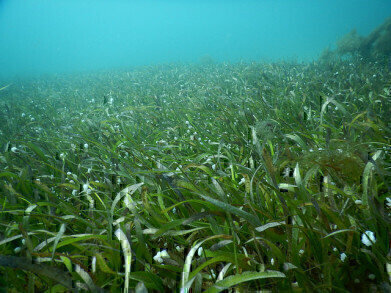Water/Wastewater
How Does Pollution Affect Seagrass?
Mar 14 2018
A new study from Cardiff University has demonstrated that seagrass growth is suffering from exposure to pollution around the UK. Improperly treated sewage and agricultural run-off is finding its way into coastal waters, where the excessive levels of nitrogen in these contaminants is inhibiting growth of the native seagrass. This, in turns, affects the various forms of life which call it home.
What is seagrass?
Seagrass meadows are generally found in coastlands and other sandy or muddy parts of Britain. They provide an important habitat for a diverse array of marine life, including fish such as cod, pollack and plaice and even seahorses.
They can also serve as useful absorbers of atmospheric carbon. According to Benjamin Jones, chief scientist on the Cardiff University study, seagrass can be up to 35 times more effective at capturing carbon than a tropical rainforest. This can also help to prevent ocean acidification, another phenomenon detrimental to life beneath the waves. Furthermore, they are important in preventing coastal erosion and stabilising the sediment.
The human impact
Mr Jones’ study, published in the journal Frontiers in Plant Science, examined seagrass meadows in 11 locations around the UK – 10 of which were inside protected sites. The results showed that seagrass leaves in different sites showed varying levels of the pollutant nitrogen-15, a by-product of sewage and agricultural waste.
Nitrogen-15 concentrations were at their highest at Southend on Sea and other densely-populated urban sites, where the challenges of flood control and improper wastewater disposal practices have led to more contaminants entering the coastal waters. Indeed, Mr Jones found that British seagrass showed 75% more nitrogen than samples from other parts of the globe.
Bad for seagrass, bad for biodiversity
What does this excess of nitrogen mean in practical terms? Well, the element encourages the growth of tiny marine algae, which clings to the leaves of the seagrass and absorbs the sunlight which otherwise would have been destined for the plant. As a result, the seagrass meadows are disadvantaged and unable to adequately photosynthesise, thus stunting their growth.
This, in turn, has a knock-on effect on the fauna which reside inside seagrass meadows. Because the UK can only foster seagrass at depths of up to seven metres, cod, plaice, pollacks and seahorses have fewer locations where they can live, feed and mate. By comparison, certain regions of California have seagrass growing at depths of 35m because of increased sunlight and water clarity.
A change needed
Mr Jones argues that the study proves we must change our habits with regards to wastewater treatment and controlling agricultural run-off, if the coastal environment is to be improved. As a consequence of the study, the scientists have released an app called Seagrass Spotter, which allows users to document seagrass quality to a national database wherever they encounter it.
Events
May 05 2024 Seville, Spain
May 13 2024 Munich, Germany
May 23 2024 Beijing, China
May 23 2024 Beijing, China
Jun 10 2024 Algiers, Algeria













